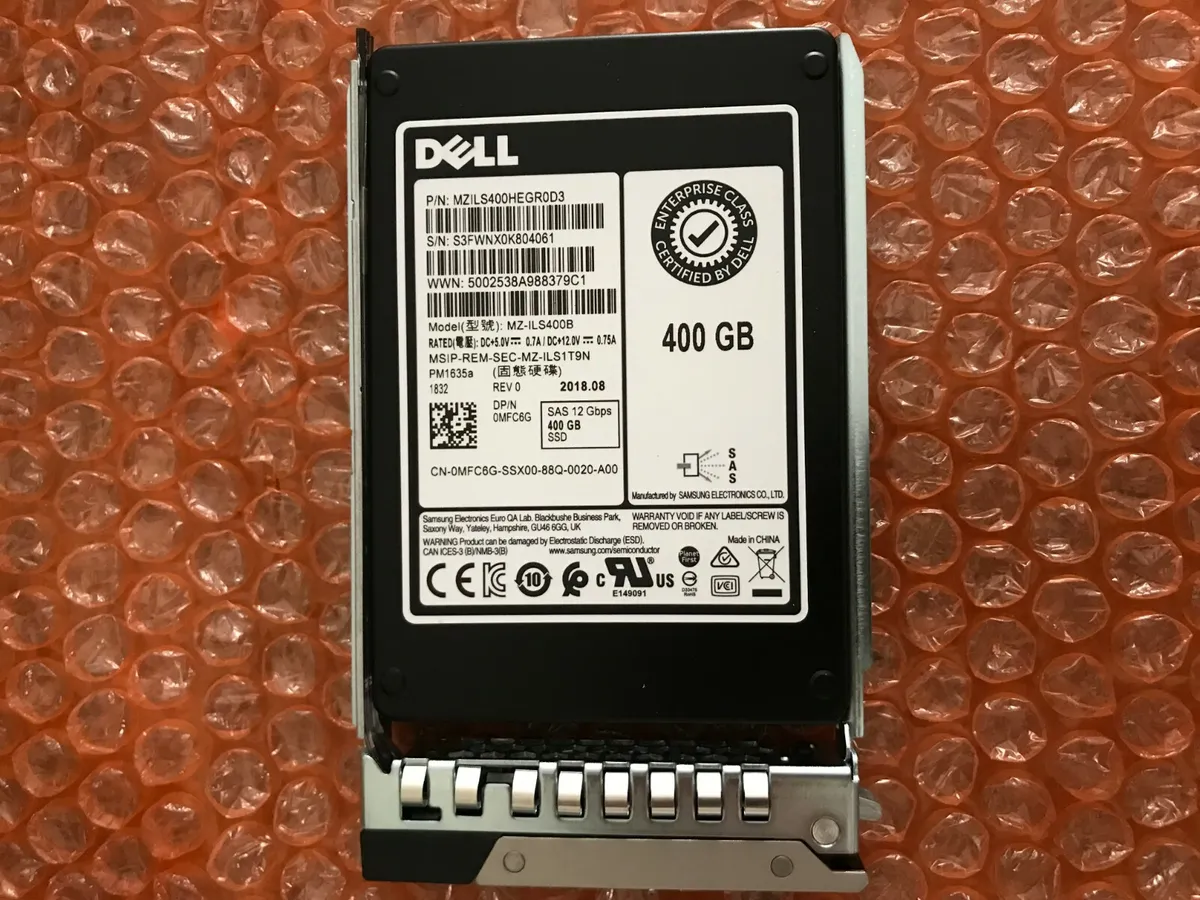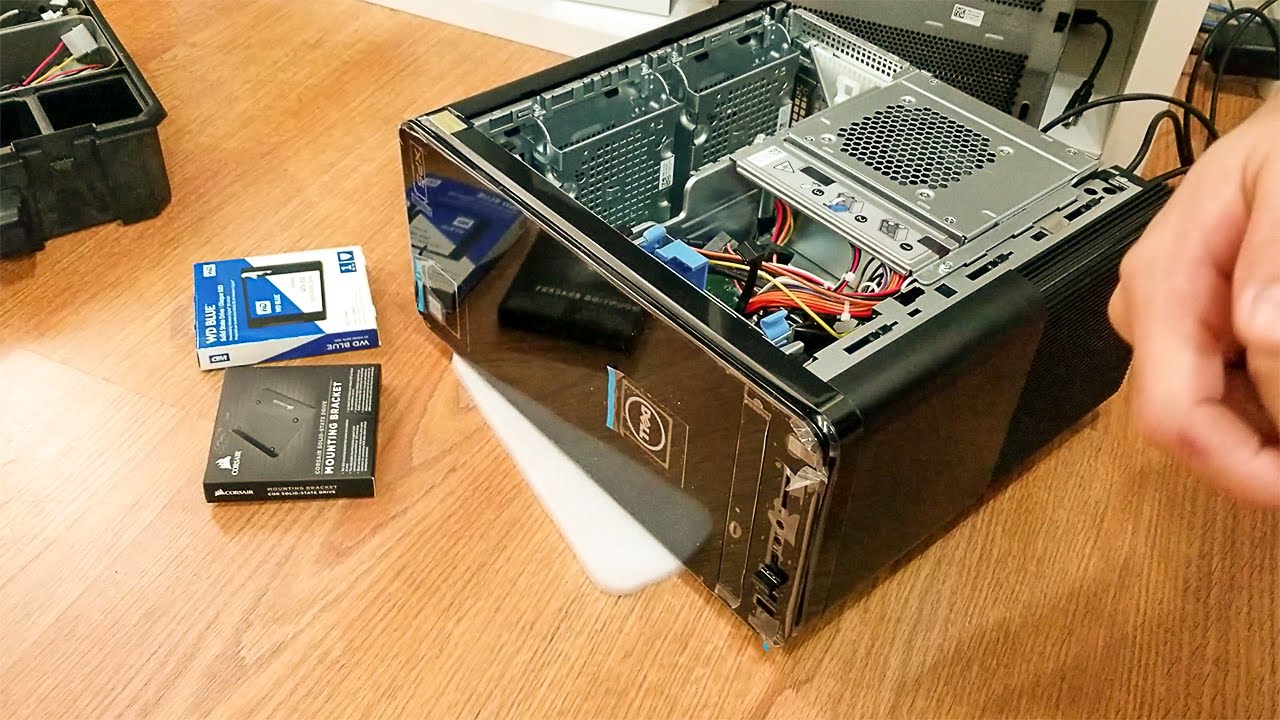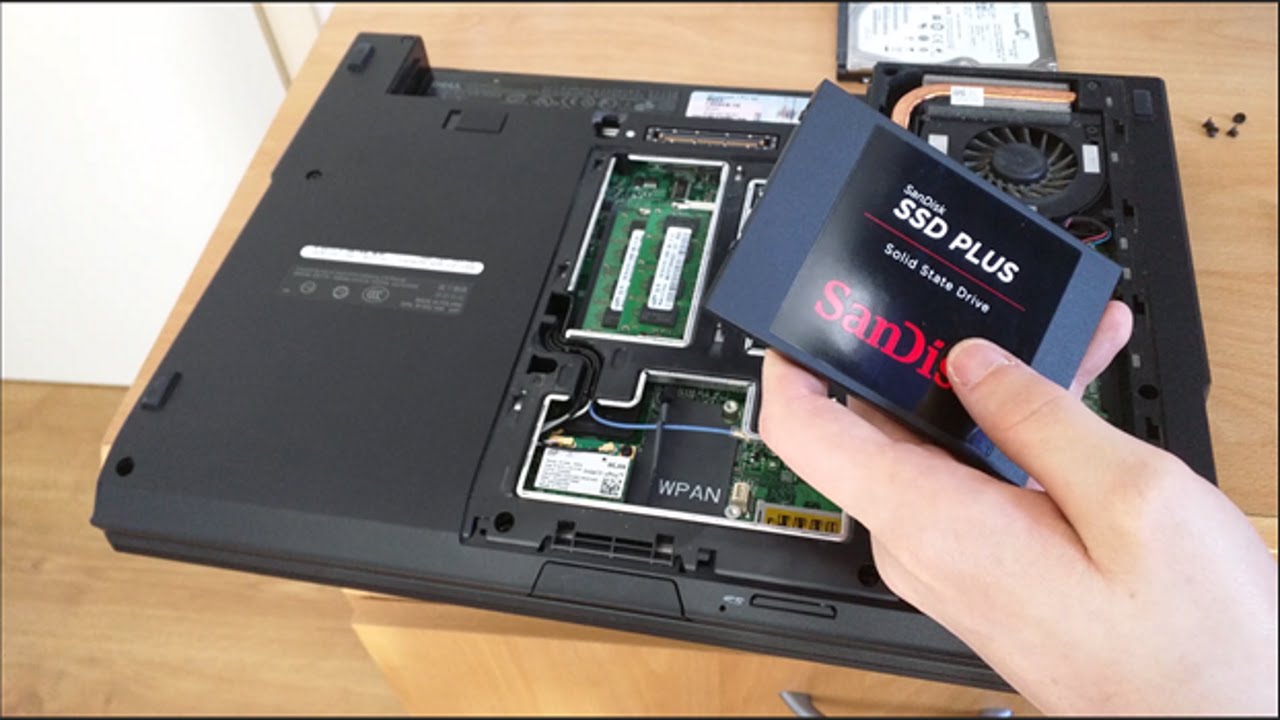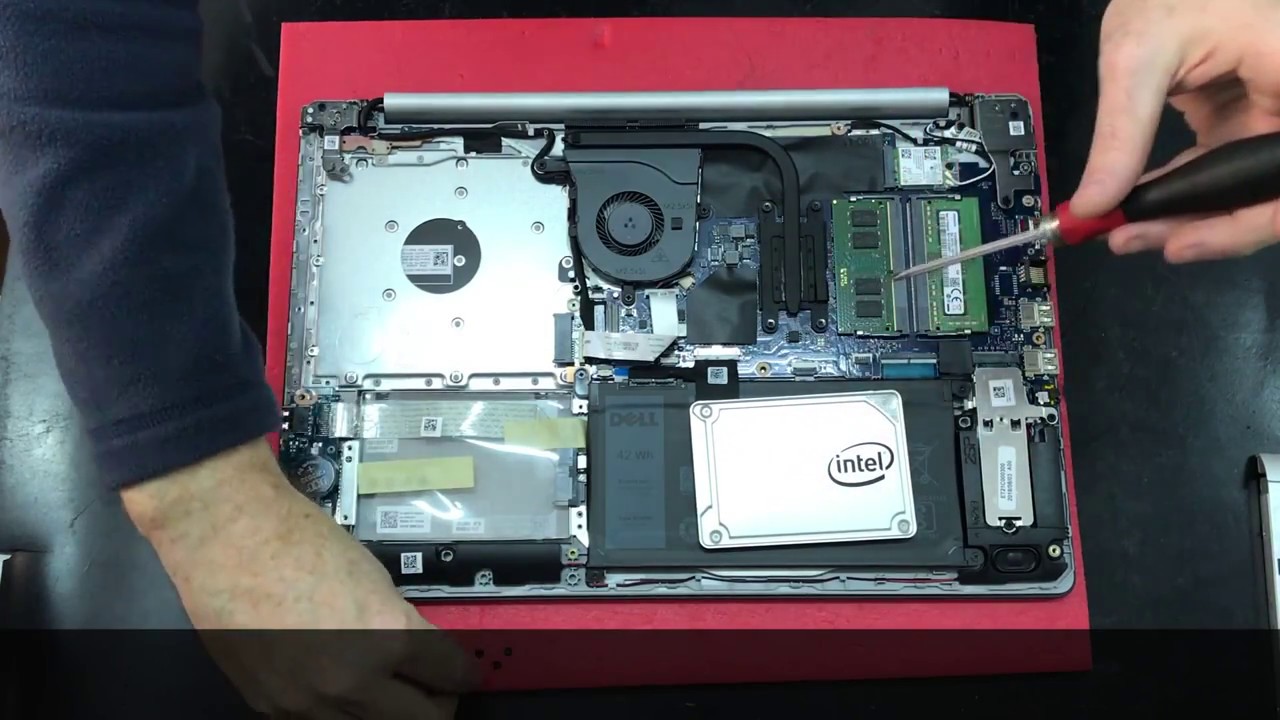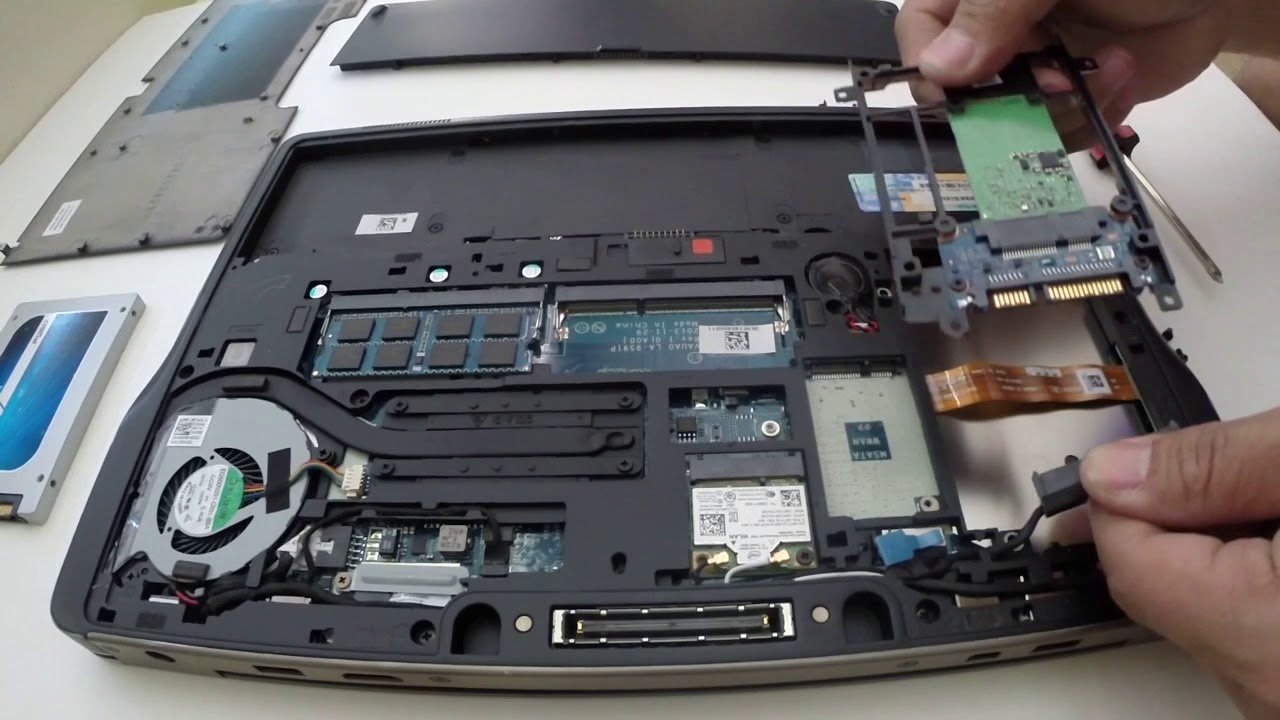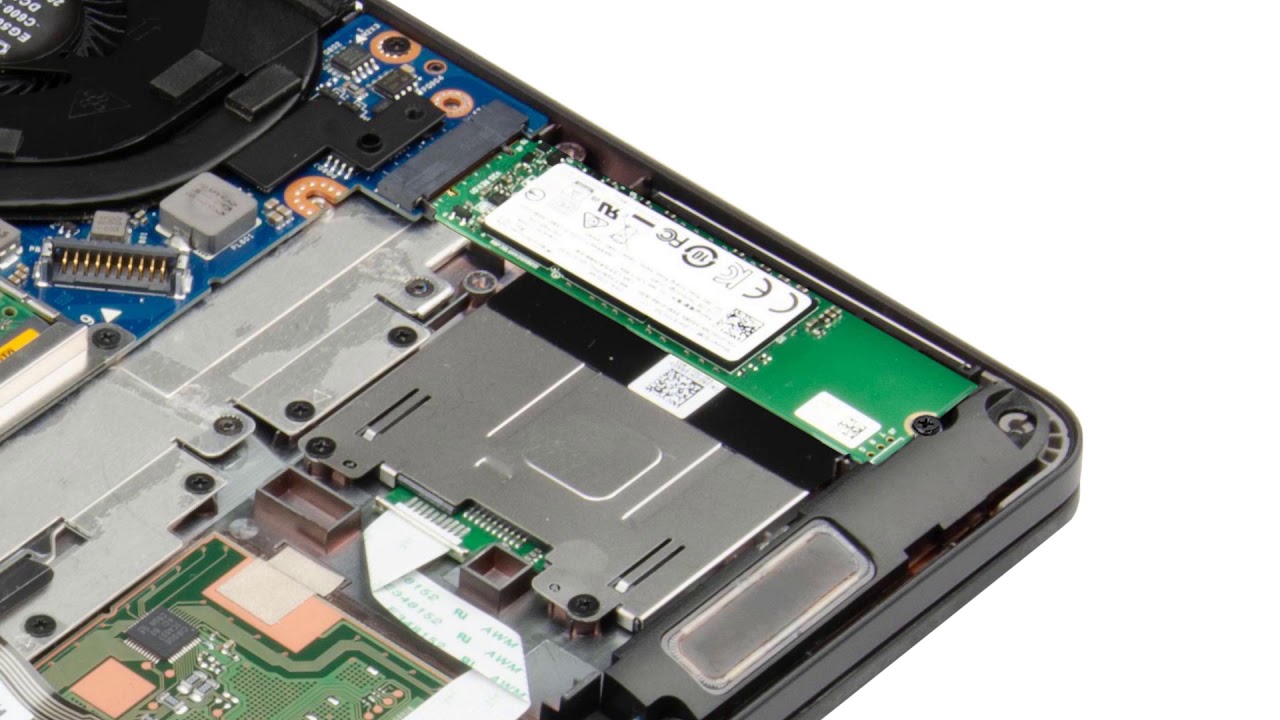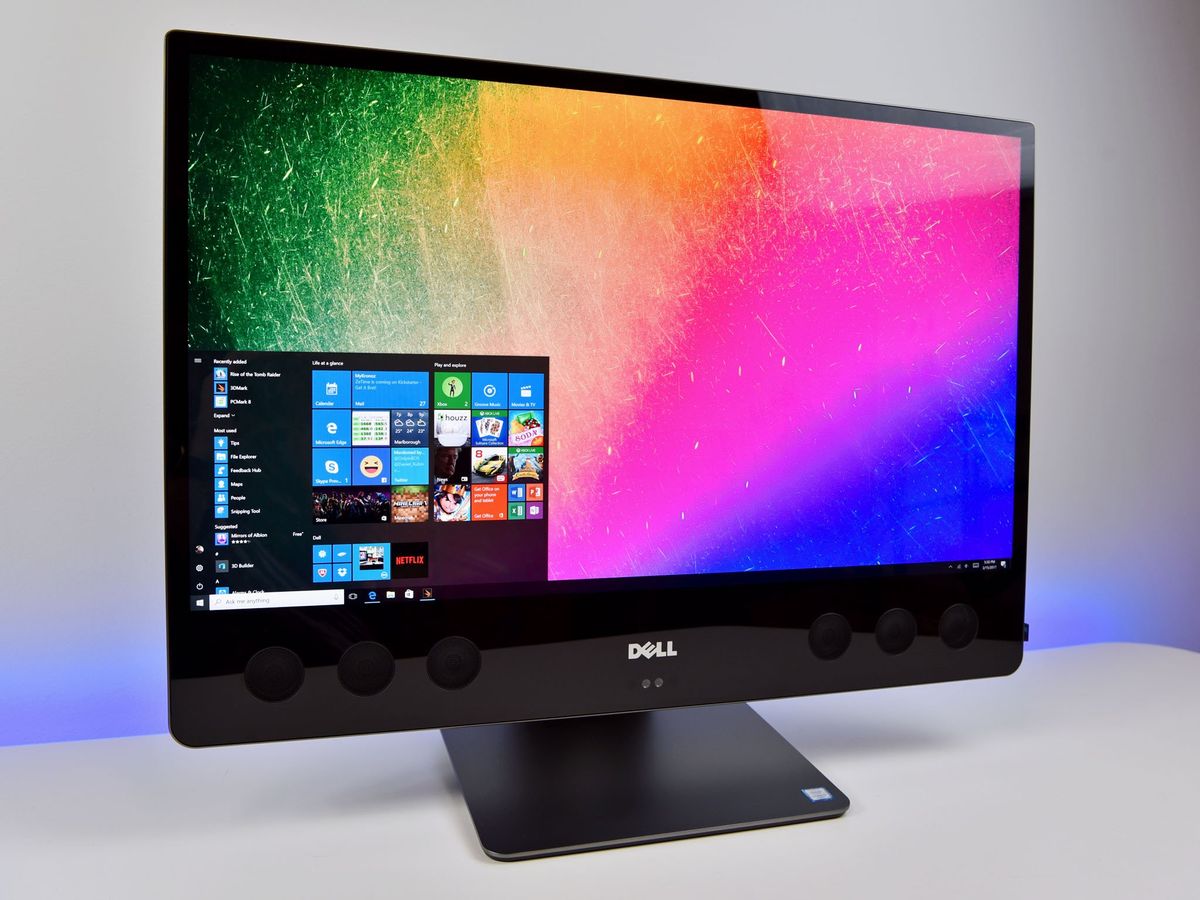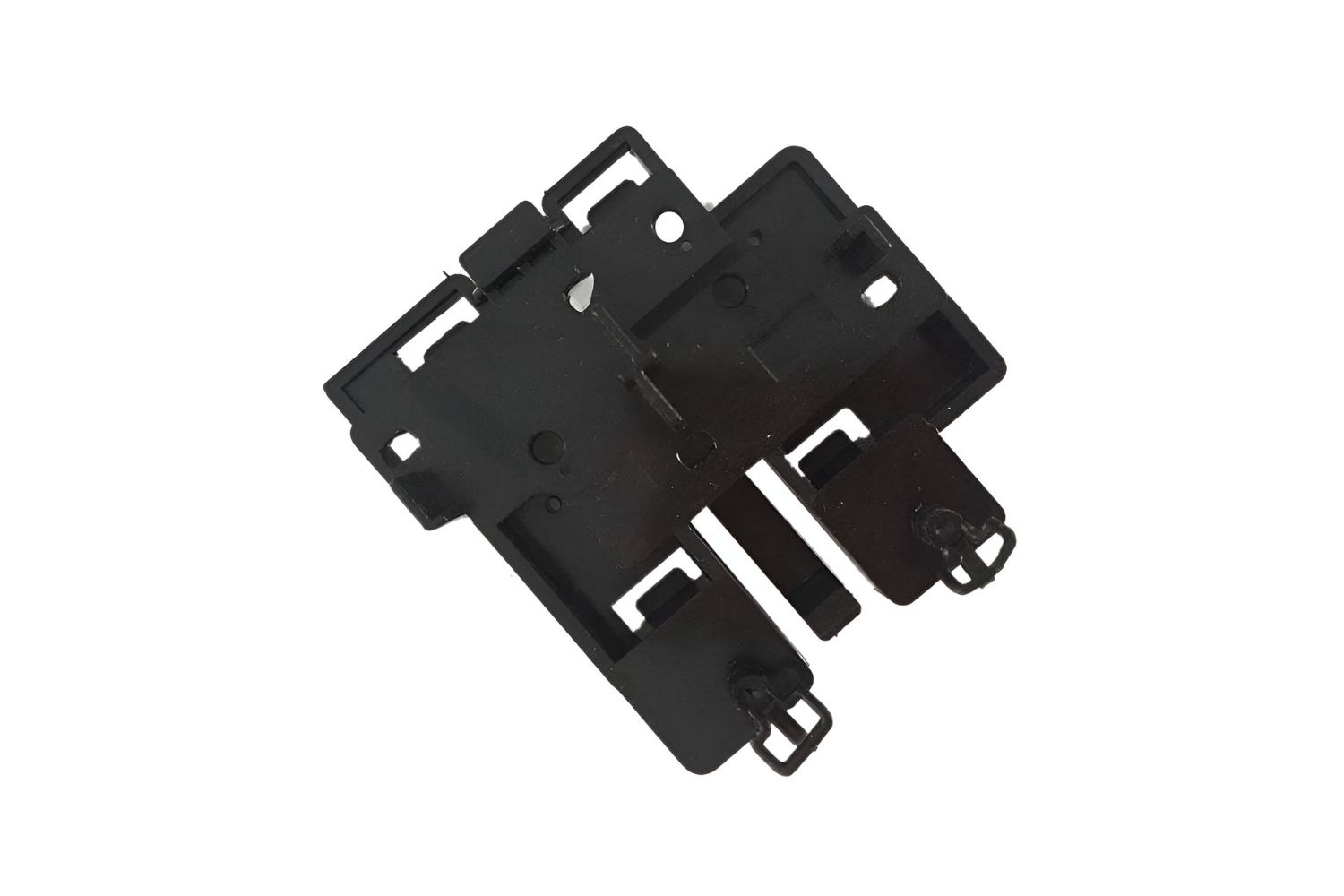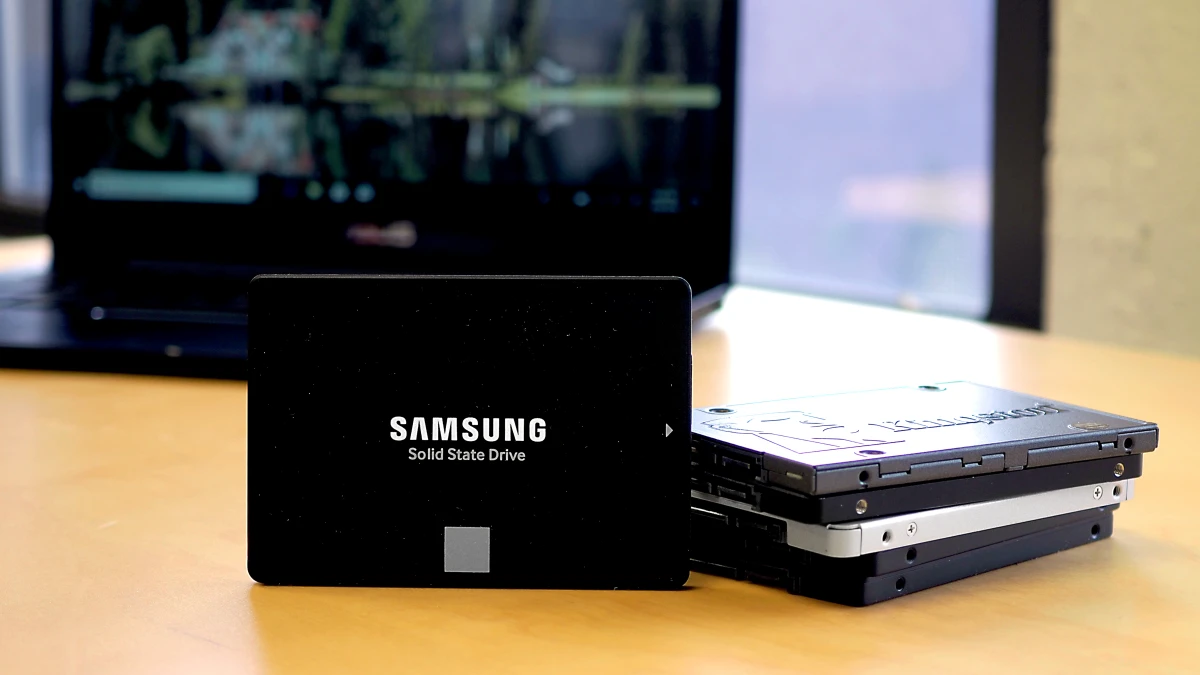Introduction
Welcome to the world of solid state drives (SSDs), where speed, reliability, and performance are taken to the next level. If you’re new to the concept of SSDs or looking to upgrade your current storage solution, you’re in the right place. In this article, we’ll explore what a Dell solid state drive is, its advantages over traditional hard disk drives (HDDs), and how to choose the right Dell SSD for your needs.
A solid state drive, commonly referred to as an SSD, is a storage device that uses integrated circuit technology to store data persistently. Unlike traditional HDDs that rely on spinning disks and mechanical components, SSDs are composed of flash memory, making them faster, more reliable, and overall more efficient.
So what exactly makes solid state drives so special? One of the key advantages of SSDs is their lightning-fast performance. With no moving parts, data can be accessed and written to memory much faster compared to traditional HDDs. This translates to reduced boot times, faster application loading, and quicker file transfers, providing a seamless computing experience.
Another major advantage of SSDs is their enhanced durability. Since there are no mechanical parts involved, there’s less risk of damage due to physical trauma, such as drops or vibrations. This makes SSDs ideal for laptops and portable devices, where durability is crucial.
Furthermore, SSDs consume less power than HDDs, resulting in improved battery life for laptops and reduced energy consumption for desktops. This not only helps to decrease electricity costs but also contributes to a more environmentally friendly computing experience.
The difference between HDDs and SSDs goes beyond just speed and durability. HDDs store data magnetically on spinning platters, while SSDs store data electronically on memory chips. This fundamental difference affects factors such as power consumption, noise level, and physical size.
Dell, a leading brand in the computer industry, offers a wide range of solid state drives to cater to various needs and budgets. Dell SSDs are known for their high performance, reliability, and compatibility with Dell computers and laptops. Whether you’re a casual user or a high-performance enthusiast, Dell has an SSD solution that will meet your requirements.
In the following sections, we’ll explore different types of Dell SSDs, the factors to consider when choosing the right SSD for your needs, and how to install a Dell SSD. So let’s dive in and discover the world of Dell solid state drives!
What is a Solid State Drive?
A solid state drive, commonly known as an SSD, is a type of storage device that utilizes flash memory technology to store and retrieve data. Unlike traditional hard disk drives (HDDs) that use spinning magnetic disks, an SSD has no moving parts, which makes it faster, more reliable, and more durable.
At its core, an SSD is made up of integrated circuits containing memory cells that store and retain data electronically. When information needs to be accessed or written to the drive, the SSD uses electrical charges to read or modify the data stored in these cells. This process allows for much faster data transfer speeds and more efficient performance compared to HDDs.
One of the primary advantages of SSDs is their remarkable speed. Since there are no mechanical limitations such as spinning platters or read/write heads, SSDs can access data nearly instantaneously. This results in faster boot times, quicker application launches, and swift file transfers, greatly enhancing overall system responsiveness.
Another significant advantage of SSDs is their reliability. With no moving parts, there is less chance of damage due to shock, vibration, or accidental drops. This makes SSDs an excellent choice for portable devices like laptops and ultrabooks that may be subjected to frequent movement or rough handling.
SSDs also have a lower failure rate compared to HDDs. The lack of mechanical components, such as the spinning platters or read/write heads found in traditional hard drives, reduces the risk of mechanical failure and data loss. This increased reliability translates to a more secure and stable storage solution for your valuable data.
In addition to their speed and reliability, SSDs are also more energy-efficient. The absence of moving parts means that SSDs consume less power when reading or writing data. This not only results in improved battery life for laptops and portable devices but also helps to reduce overall energy consumption for desktop computers, making SSDs a greener storage option.
Overall, solid state drives are a game-changer in the world of storage technology. Their speed, reliability, and efficiency make them an ideal choice for anyone looking to improve their computer’s performance or upgrade their current storage solution. In the next section, we will explore the key differences between HDDs and SSDs to help you understand why SSDs have become the preferred choice for many users.
Advantages of Solid State Drives
Solid state drives (SSDs) offer a multitude of advantages over traditional hard disk drives (HDDs), making them a popular choice among computer users. From improved speed and performance to enhanced durability and energy efficiency, here are the key advantages of using SSDs:
1. Faster Performance: SSDs are significantly faster than HDDs. With no moving parts, data can be accessed and transferred at lightning-fast speeds. This results in quicker boot times, faster application launches, and improved overall system responsiveness.
2. Enhanced Reliability: Since SSDs have no mechanical components, they are more resistant to shock, vibration, and accidental drops. This makes them highly durable and reliable, reducing the risk of data loss due to physical damage.
3. Improved Durability: With no spinning disks or read/write heads, SSDs are less susceptible to physical damage caused by movement or drops. This makes them ideal for laptops and portable devices that are regularly on the go.
4. Lower Power Consumption: SSDs consume less power than HDDs. The absence of moving parts means less energy is required to read and write data, resulting in improved battery life for laptops and reduced electricity costs for desktop computers.
5. Noiseless Operation: Since SSDs have no moving parts, they operate silently. This is in stark contrast to HDDs, which can produce noise from the spinning disks and read/write heads. The noiseless operation of SSDs provides a more pleasant and peaceful computing experience.
6. Compact and Lightweight: SSDs are typically smaller and lighter than HDDs. This makes them an excellent choice for slim laptops, ultrabooks, and other portable devices where space and weight are important considerations.
7. Improved File Access and Transfer: With their faster data access and transfer speeds, SSDs allow for seamless and faster file operations. Whether it’s opening large files, editing multimedia content, or transferring data, SSDs can handle these tasks with ease and efficiency.
8. Reduced System Heat: SSDs generate less heat compared to HDDs due to their lower power consumption. This helps to keep the overall system temperature lower, contributing to better thermal management and prolonging the lifespan of other components.
Overall, the advantages that solid state drives offer over traditional hard disk drives make them a compelling choice for those seeking improved performance, durability, and efficiency. In the next section, we’ll delve into the key differences between HDDs and SSDs to help you make an informed decision when choosing the right storage solution for your needs.
Difference between HDDs and SSDs
When it comes to storage devices, there are significant differences between traditional hard disk drives (HDDs) and solid state drives (SSDs). These differences affect factors such as speed, durability, power consumption, and form factor. Let’s take a closer look at the distinctions between HDDs and SSDs:
1. Technology: HDDs use magnetic disks, also known as platters, to store and retrieve data. Data is read and written using a magnetic head that moves across the spinning platters. On the other hand, SSDs use flash memory, a non-volatile memory technology that stores data electronically on memory chips.
2. Speed: SSDs outperform HDDs when it comes to speed. Since SSDs have no moving parts, they can access and transfer data almost instantaneously. HDDs, on the other hand, rely on mechanical components, resulting in slower read and write speeds.
3. Durability: SSDs have an edge in terms of durability. As they have no moving parts, they are more resistant to shock, vibration, and physical damage. HDDs, with their spinning platters and mechanical components, are more prone to failure if subjected to physical trauma.
4. Power Consumption: SSDs consume less power than HDDs. The absence of moving parts in SSDs means they require less energy to operate, resulting in improved battery life for laptops and reduced power consumption for desktop computers.
5. Noise Level: HDDs generate noise due to the spinning platters and moving magnetic heads, while SSDs are completely silent as they have no moving parts. This makes SSDs a more appealing choice for those looking for a noiseless computing experience.
6. Form Factor: HDDs are typically bulkier and heavier due to their mechanical components and larger form factor. SSDs, being made up of memory chips, are significantly smaller, lighter, and more compact. This makes SSDs perfect for slim laptops, ultrabooks, and other portable devices.
7. Price: HDDs are generally more affordable compared to SSDs on a per-terabyte basis. However, the price gap has been closing over the years as SSD technology becomes more mainstream. SSDs offer better value for money considering their advantages in speed, reliability, and overall performance.
While HDDs still have their place in certain applications, SSDs have become the go-to choice for many users due to their superior speed, enhanced durability, lower power consumption, and compact form factor. These differences between HDDs and SSDs should guide you in making an informed decision when selecting the right storage solution for your specific needs.
Dell Solid State Drives: An Overview
Dell, a renowned brand in the computer industry, offers a wide range of solid state drives (SSDs) that provide exceptional performance, reliability, and compatibility with Dell laptops and desktops. Dell SSDs are designed to meet the diverse needs of users, from everyday computing tasks to high-performance requirements. Let’s take a closer look at Dell’s SSD offerings:
Dell SSDs are known for their exceptional speed and responsiveness. Whether you’re booting up your system, launching applications, or accessing large files, Dell SSDs deliver impressive performance, significantly reducing loading times and enhancing overall system efficiency.
Dell offers SSDs with various storage capacities, ranging from smaller capacities suitable for everyday use and budget-conscious users, to larger capacities designed for power users and professionals who need extensive storage space. This ensures that there’s a Dell SSD available to meet the storage needs of every user.
In terms of durability, Dell SSDs are built with robust technology that ensures data integrity and longevity. With no moving parts, there’s less risk of mechanical failure, making Dell SSDs more resistant to physical damage caused by drops, vibrations, or accidental impacts.
Compatibility is also a key consideration when choosing an SSD, and Dell SSDs are specifically designed to work seamlessly with Dell computers and laptops. This ensures optimal performance and reliability, as well as easy integration with Dell systems without any compatibility issues.
Another noteworthy aspect of Dell SSDs is their energy efficiency. By consuming less power compared to traditional hard disk drives (HDDs), Dell SSDs contribute to lower energy consumption, extended battery life for laptops, and overall reduced operating costs.
Dell SSDs feature advanced technologies, such as NAND flash memory and SATA interfaces, to ensure high transfer speeds and seamless data operations. Whether you’re a casual user, a content creator, or a gaming enthusiast, Dell SSDs provide the speed and performance you need for a smooth and efficient computing experience.
Finally, Dell SSDs are backed by Dell’s reputation for quality and customer support. With their commitment to delivering reliable and innovative storage solutions, Dell continues to be a leader in the SSD market, providing users with reliable, high-performance storage solutions.
From improved speed and reliability to advanced features and compatibility, Dell solid state drives offer a range of benefits for users of all kinds. In the following sections, we’ll explore the different types of Dell SSDs available and guide you on how to choose the right Dell SSD for your specific needs.
Different Types of Dell SSDs
Dell offers a wide array of solid state drives (SSDs), catering to different needs and requirements of users. From entry-level options to high-performance drives, Dell has a variety of SSDs to suit various use cases. Let’s explore the different types of Dell SSDs:
1. Dell SATA SSDs: These SSDs use the Serial ATA (SATA) interface, which offers compatibility with a wide range of Dell laptops and desktops. They provide an affordable storage solution for those looking to upgrade their systems with faster and more reliable storage.
2. Dell NVMe SSDs: Non-Volatile Memory Express (NVMe) SSDs deliver exceptional performance by utilizing the NVMe interface, which enables faster data transfer rates compared to SATA-based SSDs. These high-speed drives are ideal for power users, content creators, and gamers seeking the utmost speed and responsiveness in their systems.
3. Dell Enterprise SSDs: Designed for enterprise environments, Dell Enterprise SSDs offer advanced features such as higher endurance, improved reliability, and enhanced data protection. These drives are suitable for demanding workloads, such as databases, virtualization, and data centers.
4. Dell PCIe SSDs: PCIe SSDs utilize the PCIe (Peripheral Component Interconnect Express) interface, which provides even faster data transfer speeds compared to SATA and NVMe SSDs. These high-performance drives deliver blazing-fast storage performance, making them well-suited for intensive tasks and applications.
5. Dell M.2 SSDs: M.2 SSDs are compact, slim form factor drives that fit into the M.2 slot on compatible Dell laptops and desktops. These SSDs are known for their small footprint, making them perfect for ultrabooks and other slim devices where space is at a premium.
6. Dell SAS SSDs: Serial Attached SCSI (SAS) SSDs are designed for enterprise-grade storage systems that demand higher performance and reliability. These SSDs offer compatibility with Dell PowerEdge servers and are built to handle demanding workloads in data centers and server environments.
Dell SSDs come in a range of storage capacities, allowing users to choose the size that best suits their needs, from smaller capacities for everyday use to larger capacities for storing large files, multimedia content, and applications.
When selecting a Dell SSD, it’s important to consider factors such as your specific requirements, budget, and system compatibility. By understanding the different types of Dell SSDs available, you can make an informed decision on which drive will best meet your needs.
In the following section, we’ll guide you on how to choose the right Dell SSD that aligns with your specific requirements and preferences.
How to Choose the Right Dell SSD for Your Needs
Choosing the right Dell solid state drive (SSD) involves considering a few key factors to ensure that you select the drive that best meets your specific needs and requirements. Here are some factors to consider when choosing a Dell SSD:
1. Storage Capacity: Determine your storage needs based on the types of files and applications you’ll be working with. If you deal with large files, multimedia content, or extensive software, opting for a higher storage capacity SSD would be ideal to ensure you have enough space.
2. Performance Requirements: Assess your performance needs. If you require faster boot times, quicker application launches, and seamless multitasking, consider Dell’s NVMe or PCIe SSDs, which offer significantly faster data transfer speeds compared to SATA-based SSDs.
3. Budget: Set a budget for your SSD purchase. Dell offers SSDs at varying price points, so it’s important to determine how much you’re willing to spend while considering the balance between storage capacity and performance.
4. Compatibility: Ensure that the Dell SSD you choose is compatible with your Dell laptop or desktop. Check the documentation or specifications of your device to verify the supported interface (SATA, NVMe, PCIe) and form factor (M.2, 2.5″, etc.). This will help you select the SSD that will seamlessly integrate with your system.
5. Endurance and Reliability: Consider the endurance and reliability requirements of your usage. For enterprise or heavy-duty tasks, Dell’s enterprise SSDs or SAS SSDs offer enhanced endurance and reliability compared to consumer-grade SSDs, ensuring optimal performance even under demanding workloads.
6. Future Expansion: Consider your future needs and the possibility of expanding your storage capacity. If you anticipate requiring additional storage in the future, it may be wise to choose a Dell SSD with a higher storage capacity to accommodate potential future needs without the need for replacement.
7. Warranty and Support: Check the warranty and after-sales support provided by Dell for the SSD. A longer warranty period and reliable customer support can provide peace of mind and assistance in case of any issues or concerns with your SSD.
By evaluating these factors, you can choose the right Dell SSD that aligns with your specific needs, budget, and system compatibility. It’s always recommended to refer to Dell’s documentation, product specifications, or consult with Dell’s support team for further assistance in selecting the ideal SSD for your requirements.
In the next section, we’ll provide guidance on how to install a Dell SSD, ensuring a smooth and successful transition to your new storage solution.
Installing a Dell SSD
Installing a solid state drive (SSD) in your Dell laptop or desktop is a straightforward process that can significantly enhance your system’s performance and storage capacity. Here’s a step-by-step guide on how to install a Dell SSD:
1. Prepare: Before starting the installation process, ensure that you have the necessary tools, including a screwdriver, and a compatible Dell SSD that matches your system’s interface and form factor.
2. Back up Your Data: It’s crucial to back up your important files and data to avoid any potential loss during the SSD installation process. Transfer your files to an external hard drive or cloud storage to ensure they are safely backed up.
3. Power Off and Disconnect: Shut down your Dell laptop or desktop and unplug it from the power source. Also, remove any other peripheral devices connected to your system.
4. Locate the SSD Slot: Depending on the Dell model, the slot for the SSD can vary. In laptops, it is often located underneath a panel that needs to be removed, while in desktops, it could be a dedicated drive bay or an available slot on the motherboard.
5. Install the SSD: Carefully insert the SSD into the slot, ensuring that it is properly aligned with the connectors. Use the provided screws or mounting brackets to secure the SSD in place, if required.
6. Connect the Cables: If your Dell SSD requires any data or power cables, connect them to the appropriate ports on the SSD and the motherboard. Ensure a secure connection for smooth operation.
7. Close the Panel/Case: If you removed any panels or covers during the installation process, carefully reattach them and ensure they are properly secured. This step varies depending on the Dell model and form factor.
8. Power Up and Initialize: Once the SSD is installed, reconnect your Dell system to the power source and power it on. Enter the system’s BIOS settings and check if the SSD is recognized. If needed, format and initialize the SSD using the appropriate software.
9. Restore Your Data: After initializing the SSD, you can restore your data from the backup you created earlier. Copy your files and important data to the new SSD for seamless access and storage.
It is recommended to consult Dell’s documentation or support resources specific to your Dell laptop or desktop model for any model-specific instructions or considerations during the SSD installation process.
By following these steps, you can easily install a Dell SSD and enjoy the improved performance and storage capabilities it offers to enhance your computing experience.
In the next section, we’ll address some frequently asked questions about Dell SSDs to further assist you in understanding and utilizing your Dell solid state drive.
Frequently Asked Questions about Dell SSDs
As solid state drives (SSDs) continue to gain popularity, it’s common for users to have questions about Dell SSDs and their functionality. Here are some frequently asked questions about Dell SSDs, along with their answers:
Q: Are Dell SSDs compatible with non-Dell computers?
A: Yes, Dell SSDs are generally compatible with non-Dell computers as long as the interface and form factor of the SSD match the specifications of the computer. However, it’s always recommended to check the compatibility of the SSD with your specific system before purchasing.
Q: Can I use a Dell SSD as an external drive?
A: Yes, you can use Dell SSDs as external drives by using an external drive enclosure or an adapter that supports the interface of the SSD. This allows you to connect the SSD to your computer via USB or Thunderbolt for portable storage and data transfer.
Q: Do Dell SSDs come with cloning software?
A: Dell SSDs may come with cloning software or provide information on recommended third-party cloning software. Cloning software allows you to transfer the contents of your existing hard drive to the new SSD, including the operating system and applications, making the transition seamless.
Q: How do I check the health and performance of my Dell SSD?
A: Dell provides various diagnostics and monitoring tools to check the health and performance of your SSD. You can use software like Dell SupportAssist or third-party tools like CrystalDiskInfo to monitor the SSD’s SMART (Self-Monitoring, Analysis, and Reporting Technology) attributes and overall performance.
Q: Can I upgrade my existing Dell HDD to an SSD?
A: Yes, upgrading your existing Dell hard disk drive (HDD) to an SSD is a popular and recommended upgrade. It can significantly improve the speed and performance of your computer, reduce boot times, and enhance overall system responsiveness.
Q: How do I enable TRIM on my Dell SSD?
A: TRIM is a feature that improves the long-term performance and lifespan of an SSD. Most modern Dell systems automatically enable TRIM. However, it’s a good practice to ensure that your operating system has TRIM support enabled for optimal SSD performance. This can be done through the operating system settings or utilities.
Q: Are Dell SSDs covered by a warranty?
A: Yes, Dell SSDs typically come with a warranty that varies depending on the specific model and region. It’s important to check the warranty details provided by Dell for the SSD you intend to purchase or refer to the product documentation for warranty information.
If you have additional questions or specific concerns about Dell SSDs, it’s recommended to reach out to Dell’s customer support or consult their documentation and support resources for further assistance.
In the final section, we’ll wrap up the article with a summary of the key points discussed.
Conclusion
In conclusion, Dell solid state drives (SSDs) offer a range of benefits that make them a compelling choice for users seeking enhanced performance, reliability, and efficiency in their storage solutions. With their lightning-fast speed, improved durability, and lower power consumption, Dell SSDs provide a significant upgrade over traditional hard disk drives (HDDs).
We explored what Dell SSDs are and their advantages, including faster performance, enhanced reliability, and reduced power consumption. We also discussed the key differences between HDDs and SSDs, highlighting why SSDs have become the preferred choice for many users.
Furthermore, we provided an overview of Dell’s SSD offerings, including SATA, NVMe, Enterprise, PCIe, M.2, and SAS SSDs, catering to various needs and use cases. The importance of choosing the right Dell SSD based on factors such as storage capacity, performance requirements, compatibility, and budget was also emphasized.
We walked through the installation process of a Dell SSD, emphasizing the need to back up data, ensuring compatibility, and properly connecting the SSD to maximize performance. Additionally, we addressed common questions about Dell SSDs, providing insights into compatibility with non-Dell systems, using Dell SSDs as external drives, and enabling features like TRIM for optimal performance.
Whether you’re a casual user, a professional, or a business in need of reliable and high-performance storage solutions, Dell SSDs offer a wide range of options to meet your requirements.
By understanding the advantages and different types of Dell SSDs, as well as considering compatibility and performance needs, you can confidently choose the right Dell SSD for an efficient and seamless computing experience.
We hope this comprehensive guide has provided you with valuable information about Dell SSDs and empowered you to make an informed decision when it comes to enhancing your storage solution. Should you have any additional queries or need further assistance, it’s advisable to consult Dell’s documentation or reach out to their support team for personalized guidance.







